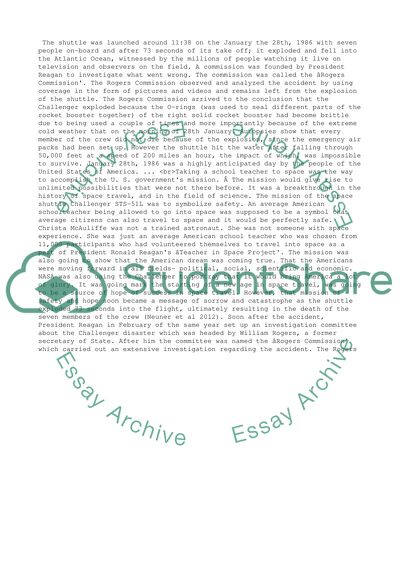Cite this document
(“The Challenger Disaster : a failure of Engineering Managers Essay”, n.d.)
The Challenger Disaster : a failure of Engineering Managers Essay. Retrieved from https://studentshare.org/management/1465503-the-challenger-disaster-yt-a-failure-of
The Challenger Disaster : a failure of Engineering Managers Essay. Retrieved from https://studentshare.org/management/1465503-the-challenger-disaster-yt-a-failure-of
(The Challenger Disaster : A Failure of Engineering Managers Essay)
The Challenger Disaster : A Failure of Engineering Managers Essay. https://studentshare.org/management/1465503-the-challenger-disaster-yt-a-failure-of.
The Challenger Disaster : A Failure of Engineering Managers Essay. https://studentshare.org/management/1465503-the-challenger-disaster-yt-a-failure-of.
“The Challenger Disaster : A Failure of Engineering Managers Essay”, n.d. https://studentshare.org/management/1465503-the-challenger-disaster-yt-a-failure-of.


